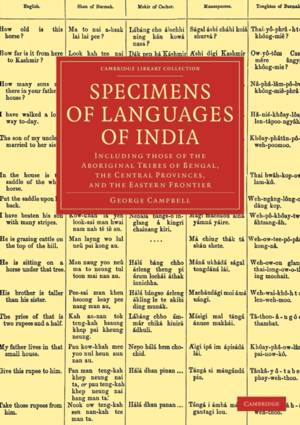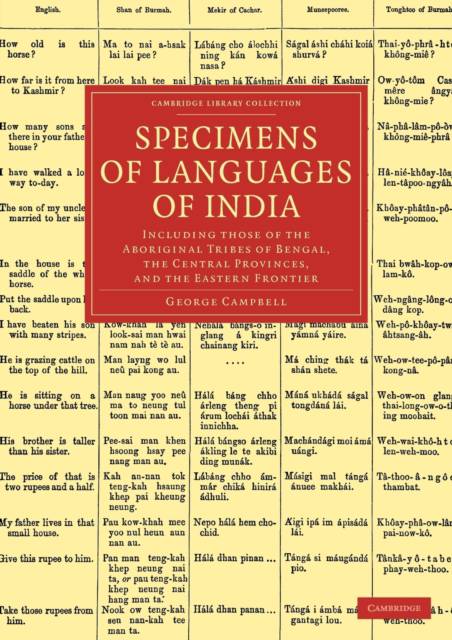
- Afhalen na 1 uur in een winkel met voorraad
- Gratis thuislevering in België vanaf € 30
- Ruim aanbod met 7 miljoen producten
- Afhalen na 1 uur in een winkel met voorraad
- Gratis thuislevering in België vanaf € 30
- Ruim aanbod met 7 miljoen producten
Zoeken
Specimens of Languages of India
Including Those of the Aboriginal Tribes of Bengal, the Central Provinces, and the Eastern Frontier
George Campbell
€ 95,45
+ 190 punten
Omschrijving
This 1874 work by Sir George Campbell, a British government official whose Scheme for the Government of India is also reissued in this series, presents a survey of the diverse languages of India, using material obtained usually by British army officers trained by Campbell to collect 'specimens' in the course of their normal work. The tabular material is presented with the English words or phrases in one column and their equivalent in the Indian language under discussion in another: most of the languages are represented by more than one dialect, such as the 'Punjabee of Lahore' and the 'Punjabee of Mooltan'. In his introduction to the work, Campbell emphasises that the survey is not scientific, and his main conclusion is that in addition to the broad division of Aryan and Dravidian language types, India contains a huge number of 'aboriginal' languages which will require further study.
Specificaties
Betrokkenen
- Auteur(s):
- Uitgeverij:
Inhoud
- Aantal bladzijden:
- 316
- Taal:
- Engels
- Reeks:
Eigenschappen
- Productcode (EAN):
- 9781108046084
- Verschijningsdatum:
- 24/05/2012
- Uitvoering:
- Paperback
- Formaat:
- Trade paperback (VS)
- Afmetingen:
- 210 mm x 297 mm
- Gewicht:
- 762 g

Alleen bij Standaard Boekhandel
+ 190 punten op je klantenkaart van Standaard Boekhandel
Beoordelingen
We publiceren alleen reviews die voldoen aan de voorwaarden voor reviews. Bekijk onze voorwaarden voor reviews.








